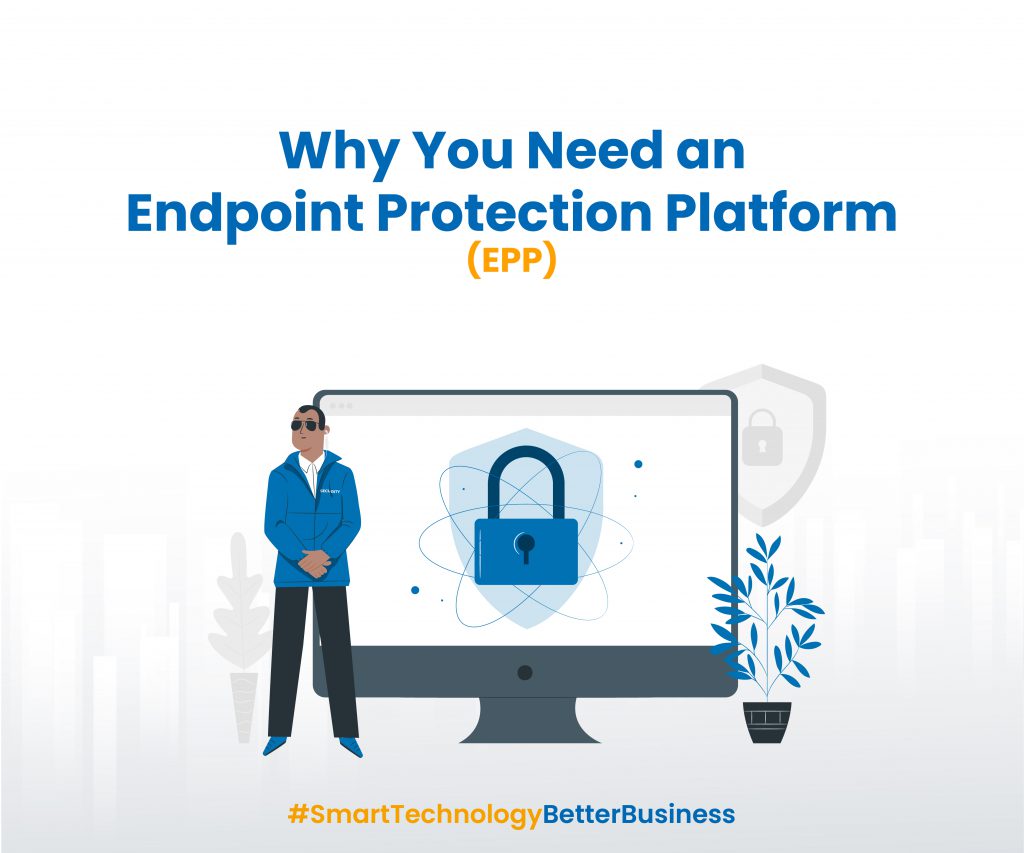When it comes to cyber security, the dangers are real and can cause serious damage to a company’s bottom line and reputation. The usual line of defense provided by traditional antivirus solutions can’t keep up with the ever-evolving threat landscape, and the complexities of today’s work-from-anywhere world. That’s why businesses are turning to next-gen Endpoint Protection Platform (EPP) solutions to secure their IT system and data.
Endpoint Protection is a comprehensive security solution that not only protects endpoints from the usual suspects, such as malware, ransomware, and phishing attacks; but it also detects zero-day exploits and other advanced threats that traditional antiviruses are unable to intercept. In this blog, we will discuss the evolution of traditional Antivirus (AV) into today’s next-gen cyber security solution for Endpoint Protection.
Traditional AV
Before WFA, BYOD, and IoT, the number of devices that businesses typically utilized was far less than they are today. This made the installation of AV software onto each endpoint, simple and not overly time-consuming. Fast forward to today, there has been a proliferation of devices of all kinds connecting to the network, an increase in user mobility, and an exponential growth in cybercrime, which have all made cyber security much more complicated, as each and every endpoint – laptop, phone, iPad, watch, etc. has to be protected no matter where or when they are being used.
As early as 2014 the efficacy of traditional AV solutions had dropped by almost 50% as hackers began employing new techniques to bypass endpoint security. Today, endpoints are attractive targets for attackers because they are often the weakest link. If a cybercriminal gains access to one endpoint, it can give them control over all other endpoints on the network and potentially the entire company’s network.
Endpoint Protection Platform (EPP)
Arising out of this changing threat landscape came Endpoint Protection Platforms (EPP) such as SentinelOne. EPP acts as the security guard at the front gate (i.e. your endpoints) of your organization that watches for anything it deems dangerous and stops them from entering your ‘premises’, that is your corporate network. EPP identifies the threat and quarantines or removes it from the endpoint before it can do any damage.
EPP is an essential component in a company’s cybersecurity arsenal, moving beyond the legacy antivirus software to leverage new technologies, automating security tactics utilizing machine learning and behavioral-based artificial intelligence.
But EPP is not a silver bullet, and it alone does not guarantee a complete blockade against a security breach. As such, protection cannot and should not stop here. Businesses need to go beyond EPP for complete endpoint protection with Endpoint Detection and Response (EDR). This way, businesses can have visibility and detect both known and unknown threats that may have already bypassed the ‘front gate’.
Conclusion
When it comes to endpoint security, traditional AV is no longer enough to protect against today’s threats. Cybercriminals are always looking for new ways to exploit businesses hence, companies need a modern-day solution such as EPP to keep up with the ever-evolving threat landscape. EPP is an important piece of your security puzzle, however, it cannot and should not be the only layer of protection you rely on. Endpoint Detection and Response (EDR) should also be part of your security strategy to ensure comprehensive protection against today’s threats. To learn more about EDR, stay tuned for the next article in this endpoint security series where we’ll explore what EDR is and how it can help businesses stay ahead of cyberattacks.




